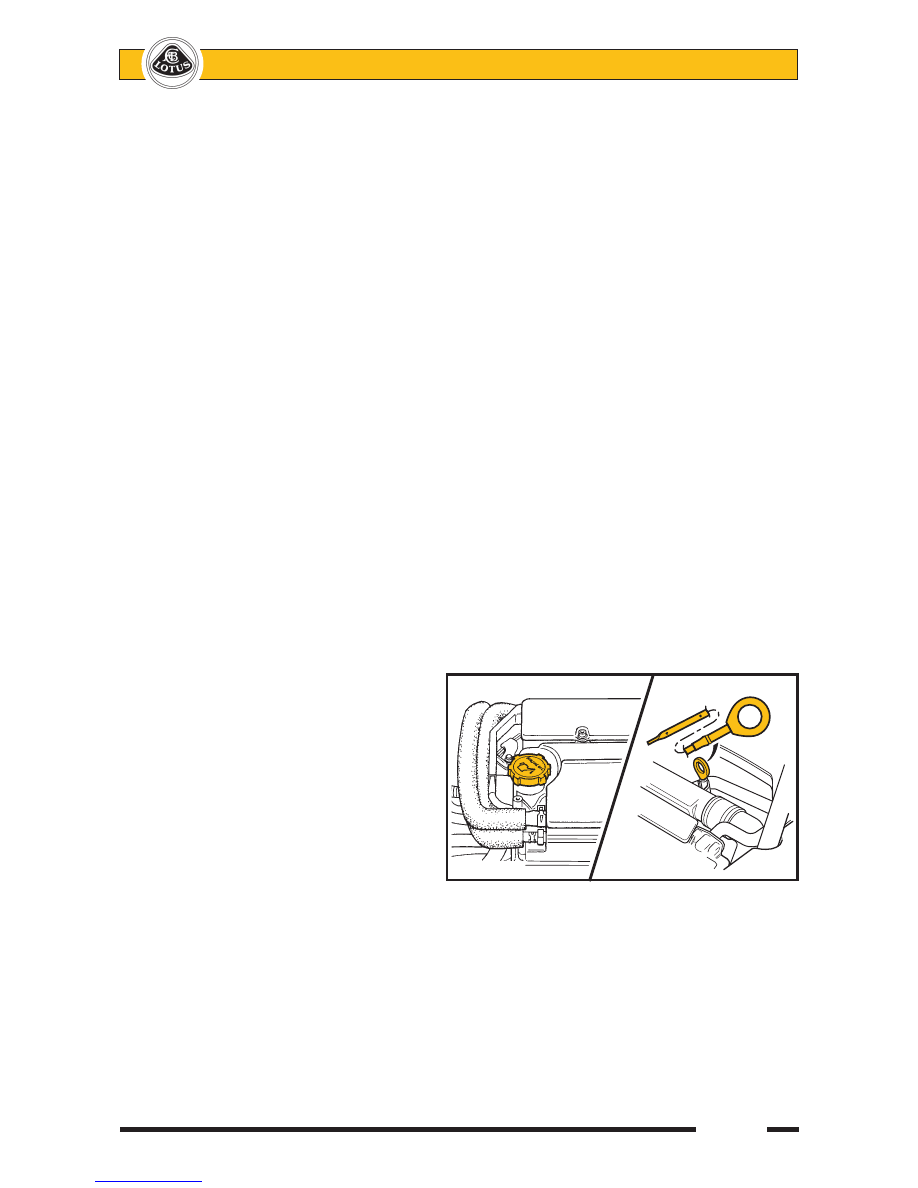Lotus Elise / Lotus Exige. Instruction - part 116

Page 13
Lotus Service Notes
2-Eleven
A one-way valve at the oil cooler connection of the 'T'- piece ensures that the oil discharged from the
Accusump is directed into the oil pump and not the cooler. An Electric Pressure Control (EPC) valve fitted at
the connection to the Accusump cylinder, allows cylinder charging when oil pressure is above 35 - 40 psi, and
cylinder discharging at engine oil pressures below 35 - 40 psi. The EPC is also linked to the ignition switch
such that with the ignition switched on the valve is open to allow oil flow, and with ignition off the valve is closed
to retain oil within the reservoir.
Normal Operation
When the ignition is turned on, the EPC valve on the Accusump is opened, allowing the pressurised oil
stored in the reservoir to flow out into the engine and prime the oil galleries and bearings ready for start up.
When the reservoir has been emptied, the pressure gauge on the end of the reservoir will indicate the pre-
charge pressure which should be 7 - 15 psi.
When the engine is started, engine oil pressure will force the reservoir piston back, such that the reservoir
air pressure gauge will indicate engine oil pressure, with the quantity of stored oil dependent on this pressure
at any one time. With cold oil, 80 psi may be seen, but idling at normal running temperature should produce
around 30 - 40 psi. Note that the pressure reading on the reservoir gauge is damped and will lag behind the
actual instantaneous pressure. A pressure relief valve in the end of the reservoir protects the equipment from
over-pressure damage. If oil is seen to escape from this valve, a fault in the lubrication system is indicated, or
excessive rpm have been used with cold oil.
When the engine is stopped, the EPC valve closes and a quantity of oil pertaining to the oil pressure at
that time, will be retained in the Accusump ready for re-starting.
Routine Checks
Be aware that the indicated oil level on the dipstick will depend on the amount of oil stored in the Accu-
sump, which itself is dependent on the both the Accusump pre-charge air pressure and the engine oil pressure
when the ignition was switched off.
Before checking the oil level, the Accusump pre-charge pressure should first be checked; turn on the
ignition to open the EPC valve and allow the stored oil to be discharged from the Accusump. The pressure
gauge reading will drop during this discharge, but should then register 7 - 15 psi representing the pre-charge.
If necessary, adjust the air pressure using tyre inflator equipment on the Schraeder valve adjacent to the gauge
and set to 15 psi. Allow adequate time for the gauge reading to stabilise.
The oil level should now be above the top
mark on the dipstick. To check for correct oil
level, the engine should be started to charge
the Accusump, and run to normal operating
temperature until the Accusump pressure
gauge registers 40 psi. If the engine is already
hot, idle oil pressure may not be sufficient to
open the Accusump valve, and the pressure
gauge will continue to show 15 psi pre-charge.
Increase engine rpm to open the valve. With
the gauge showing 40 psi, turn off the engine.
The EPC valve will then close and trap the
normal hot idle quantity of oil in the Accusump
cylinder.
After a suitable oil drainback pause, the sump oil level may then be inspected on the disptick, and the
level corrected to the top mark. It is important to maintain oil at this level to accommodate the oil transfer into
the Accusump at pressures greater than 40 psi. Be aware that checking the oil level under any conditions other
than 15 psi pre-charge and 40 psi oil pressure will produce inconsistent results.
Oil Changing
Before draining the sump, the ignition should first be switched on to open the EPC valve and allow the
Accusump to discharge the stored oil into the sump. Check that a pressure of 7 - 15 psi remains in the Ac-
cusump at the end of this process, and if necessary top up the pressure using tyre inflating equipment on the
Schraeder valve next to the gauge and set to 15 psi.
ohs149aB
OIL FILLER CAP
ohs131aB
DIPSTICK